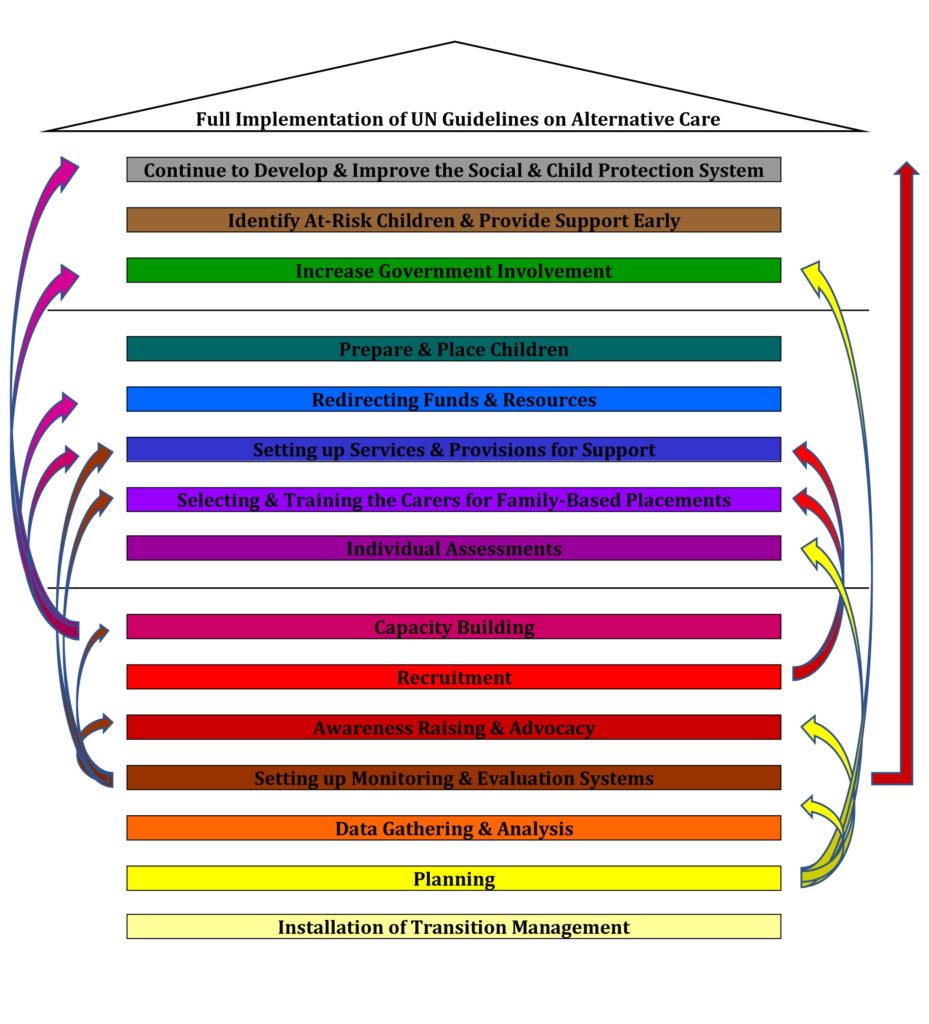Part 2 of the explanation of the ToC model: The overall goal of this model is the full implementation of the UN Guidelines on Alternative Care for Children. Reaching this goal means that the two underlying principles of these Guidelines are adhered to throughout all systems of child protection and alternative care. These two principles are the Necessity Principle and the Suitability Principle. The Necessity Principle refers to making sure that children grow up in their own family unless it is impossible or not in their best interest for that to happen. In effect, this covers the prevention of family-separation and motivation for making every attempt towards family reintegration, in cases where separation has already taken place.
The Suitability Principle dictates that if a child cannot grow up in his or her own family, the competent authorities in charge of providing alternative care have a duty to make sure that an individual decision is made for this particular child as to what type of alternative care placement suits his or her best interest most, as well as a duty to ensure that this alternative care placement is provided and is of high quality. Alternative care placements also need to be reviewed regularly to make sure that they are still necessary and suitable for the individual child. It is inherent in the Suitability Principle that institutional care is not an acceptable option since it has been proven to be very harmful to children’s development and their psychological, and even physical, well-being.
Installation of a Transition Management Team
The transition from institutional to family-based alternative care, as well as the setting up of family-based alternative care and family strengthening without deinstitutionalisation – whether at the grassroots level or the national level – is an extremely complex and time-consuming process. To be able to handle this properly, a dedicated person or team needs to be in place from the start to coordinate and lead the process. When using someone who already has their own responsibilities handle the transition as a side-occupation, pretty soon the discovery will be made that 1) the process takes an extremely long time and 2) things get overlooked.
There is no need to immediately hire all the people needed in the course of the entire transition. More people can – and will need to – be hired as different stages of the process are reached. It is necessary, however, to have people in place who are able to plan and coordinate the process and who can take on the workload of the initial stages.
How many people are needed right at the start, will depend on the level at which the transition is to take place and the scale of the operation. At the grassroots level, for the deinstitutionalisation of an institution of fewer than 50 children, starting with one full-time transition manager, who can call on the help of colleagues for practical jobs will be sufficient. However, when working at the district or national level gathering and analysing information and coordinating different parties is going to be a much bigger job, one that is unlikely to be able to be done by a single individual. In this case, a transition team will be needed. It is useful to start by hiring the person who will be managing this team, and then have him or her assess how many people will be needed for the initial stages and what kind of background these people should ideally have to be of the greatest use.

If you would like to read the explanation with the model from the very start, you can go HERE.
Please share this blog to help spread awareness.

